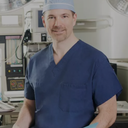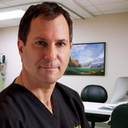Answers (26)
From board-certified doctors and trusted medical professionals
Dr. Peter Lee, MD, FACS

Dr. Peter Lee, MD, FACS
Board Certified Plastic Surgeon
Answer
Dr. Richard J. Bruneteau, MD

Dr. Richard J. Bruneteau, MD
Board Certified Plastic Surgeon
Answer
Dr. Michael Constantin Gartner, DO

Dr. Michael Constantin Gartner, DO
Board Certified Plastic Surgeon
Answer
Dr. Kevin Sadati, DO

Dr. Kevin Sadati, DO
Facial Plastic Surgeon, Board Certified in Otolaryngology – Head and Neck Surgery
Answer
Dr. Jerome Edelstein, MD

Dr. Jerome Edelstein, MD
Certified Plastic Surgeon
Answer
Dr. Babak Azizzadeh, MD, FACS

Dr. Babak Azizzadeh, MD, FACS
Board Certified Facial Plastic Surgeon
Answer
Dr. J. Jason Wendel, MD, FACS

Dr. J. Jason Wendel, MD, FACS
Board Certified Plastic Surgeon
Answer
Dr. Kenneth D. Steinsapir, MD

Dr. Kenneth D. Steinsapir, MD
Oculoplastic Surgeon, Board Certified in Ophthalmology
Answer
Dr. Toby Mayer, MD

Dr. Toby Mayer, MD
Board Certified Facial Plastic Surgeon
Answer
Dr. Richard Baxter, MD

Dr. Richard Baxter, MD
Board Certified Plastic Surgeon
Answer
More Facelift Questions
See all Facelift Q&AWE SEND PRETTY
EMAILS
What’s trending? Who’s turning heads? Which TikTok myths need busting? We’ve got you. No fluff, no gatekeeping—just real talk. Get our free, unfiltered newsletter.